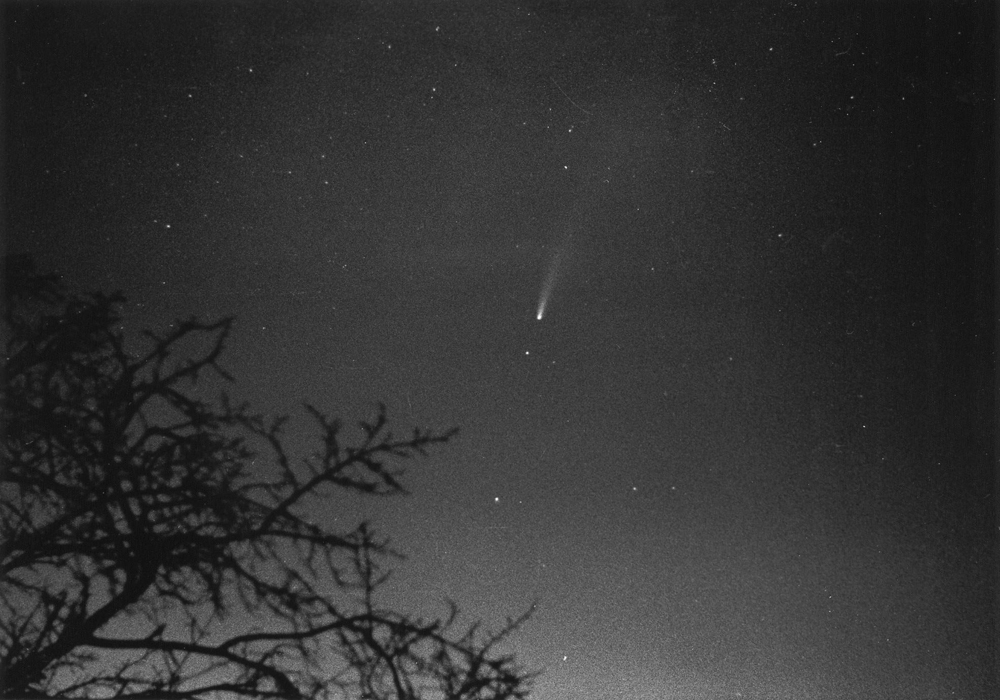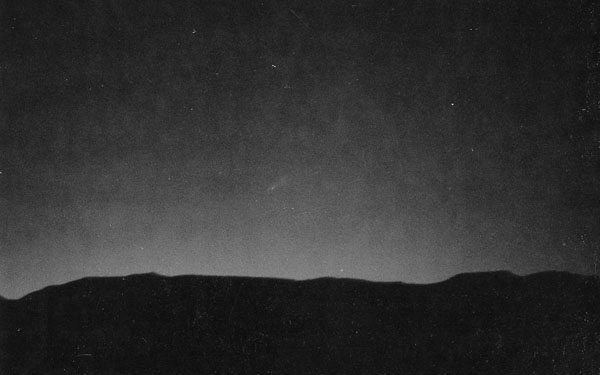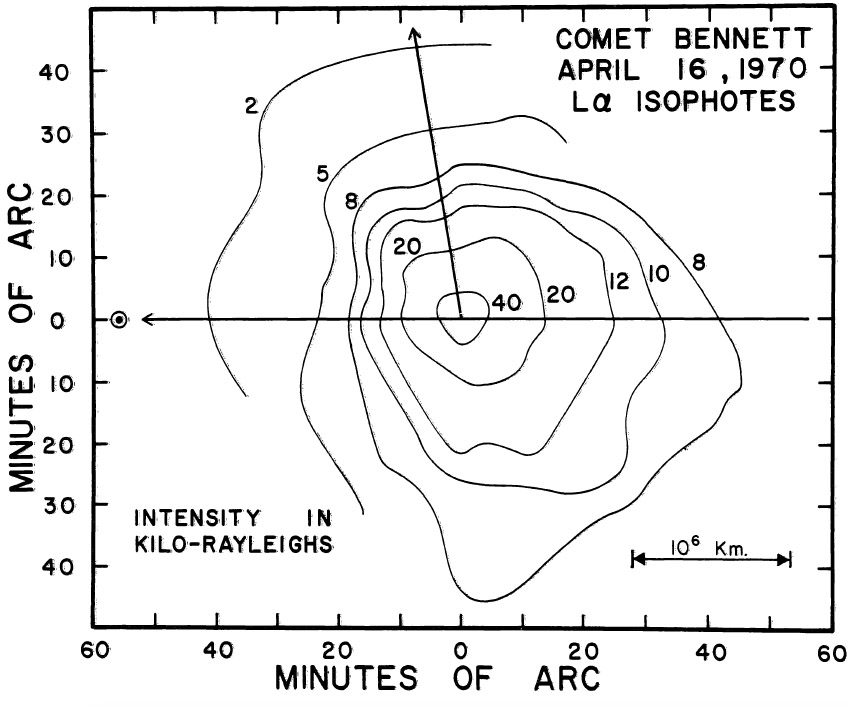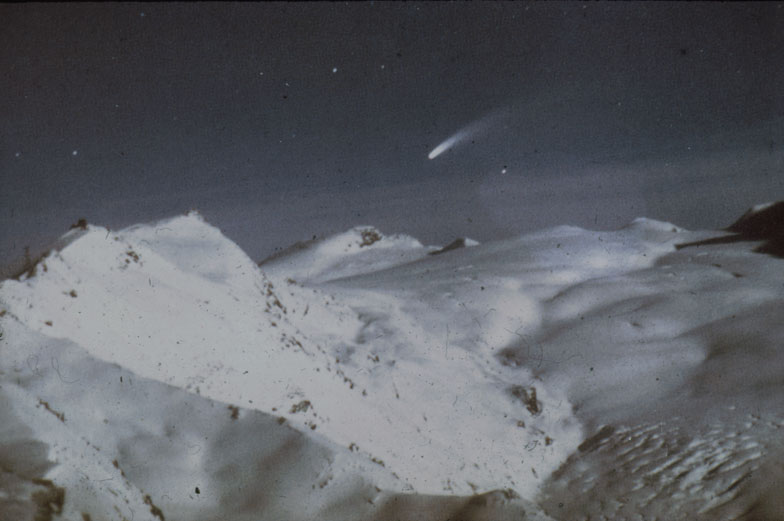
Perihelion: 1970 March 20.04, q = 0.538 AU
One of the underlying foundations of “Ice and Stone 2020” is the fact that it marks the anniversary of my observations of my very first comet, Comet Tago-Sato-Kosaka 1969g – also, incidentally, the first comet ever observed from space. (I discuss this comet, including my observations of it, in a previous “Comet of the Week” presentation.) Less than two months later another, and significantly brighter, comet came along, and it was probably that object more than anything else that inspired my lifetime of comet observing. The fortuitous occurrence of two bright comets coming in quick succession right after I first began serious observations of the night sky led that budding young astronomer to believe that bright comets are a fairly common phenomenon – something that I have long since learned is not true. By the time I learned that, however, I was “hooked” . . .
This second comet was discovered on December 28, 1969, by a South African amateur astronomer, John Bennett. At that time it was about 9th magnitude and located in southern circumpolar skies and, traveling in an orbit almost exactly perpendicular to Earth’s, traveled northward and brightened over the subsequent weeks. By about the beginning of February 1970, it had reached naked-eye brightness, and it was close to 4th magnitude near the end of that month. By mid-March, it had brightened further to about 1st magnitude and was exhibiting a bright dust tail close to 10 degrees long. Shortly after perihelion passage, the comet became visible from the northern hemisphere, and it was as bright as magnitude 0, with the bright dust tail being in excess of 10 degrees in length, when I saw it for the first time on the morning of March 24.

Continuing its northward trek, Comet Bennett remained a bright and conspicuous object throughout most of April, fading only slowly, and with the dust tail remaining bright and prominent, with some reported measurements being close to 20 degrees. It also exhibited a fainter ion tail close to 10 degrees long, and meanwhile, telescopic observations revealed an active inner coma with various jets and “hoods” or “envelopes” – indicative of rotation.
The comet finally dropped below naked-eye visibility around the middle of May, by which time it was in northern circumpolar skies. It passed seven degrees from the North Celestial Pole in late September and remained visually detectable until November, with the final photographs being taken in February 1971.
Scientific studies of Comet Bennett include infrared observations obtained by University of Minnesota astronomer Raymond Maas (who tragically died of a heart attack less than 24 hours after obtaining these observations) which show silicate grains essentially identical to those in the atmospheres of red giant stars – an important link in the study of how planetary systems form. The comet was observed in the ultraviolet with the Orbiting Astronomical Observatory 2 (OAO-2) satellite and also with the Orbiting Geophysical IsObservatory 5 (OGO-5) satellite, and these showed the presence of a large cloud of hydrogen surrounding the coma, ten times the size of the sun in the case of the OGO-5 observations. OAO-2 had detected a similar, albeit smaller, cloud around Comet Tago-Sato-Kosaka, and we now know that these “Lyman-alpha” clouds accompany almost all comets that visit the inner solar system.

I have learned informally that Comet Bennett was the first comet to be observed by astronauts in space, as the crew of the ill-fated Apollo 13 mission viewed it while en route to the moon. I have also heard that there were plans for the astronauts to photograph the comet as well, but these were apparently pre-empted following the explosion of the Service Module on April 13.
The orbit of Comet Bennett is a distinct ellipse, with calculations indicating an orbital period of 1600 to 1700 years. Its high intrinsic brightness suggests that it should have been observable on its previous return, and in 1979 the Japanese astronomer Ichiro Hasegawa suggested it might be identical to a comet that was observed from China and Europe during August and September in A.D. 363 and which according to the Roman historian Ammianus Marcellinus was believed to presage the death of the Roman emperor Jovian the following year. Unfortunately, that comet was not well enough observed for a valid orbit to be computed, so we may have to wait until Comet Bennett returns again – sometime around the 37th Century – before we can clear this matter up one way or the other.

More from Week 14:
This Week in History Special Topic Free PDF Download Glossary
Ice and Stone 2020 Home Page


